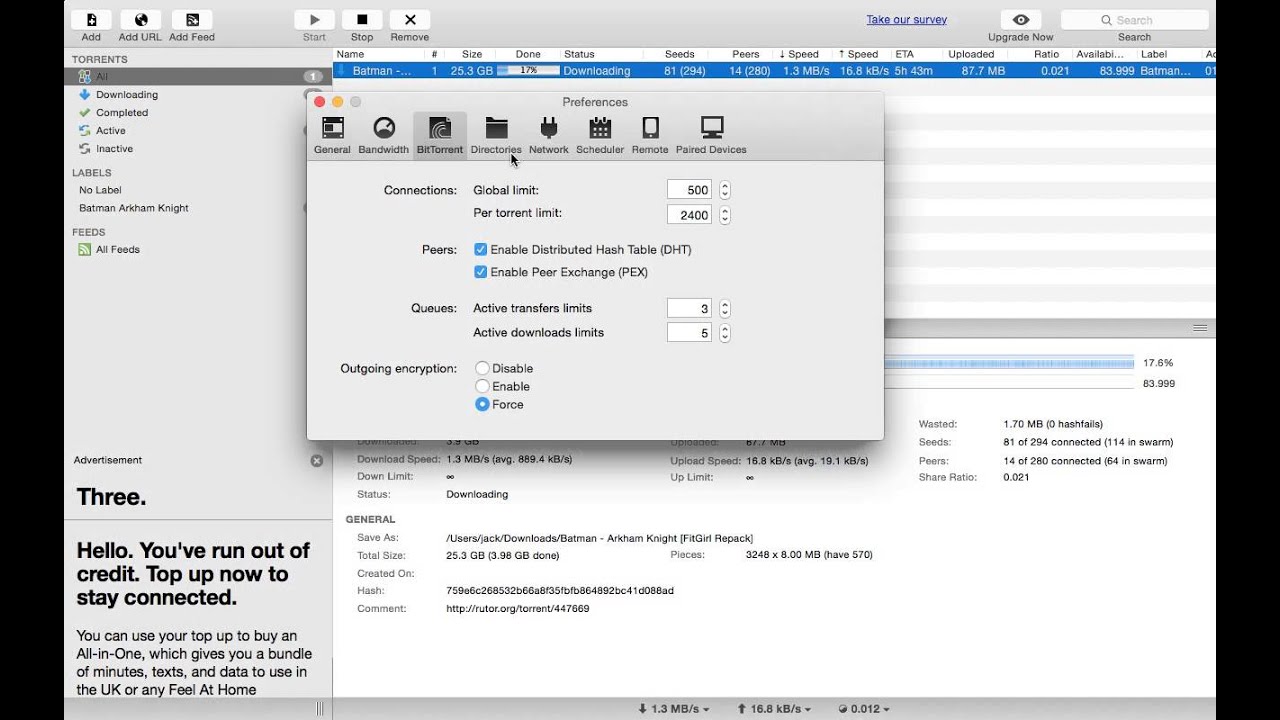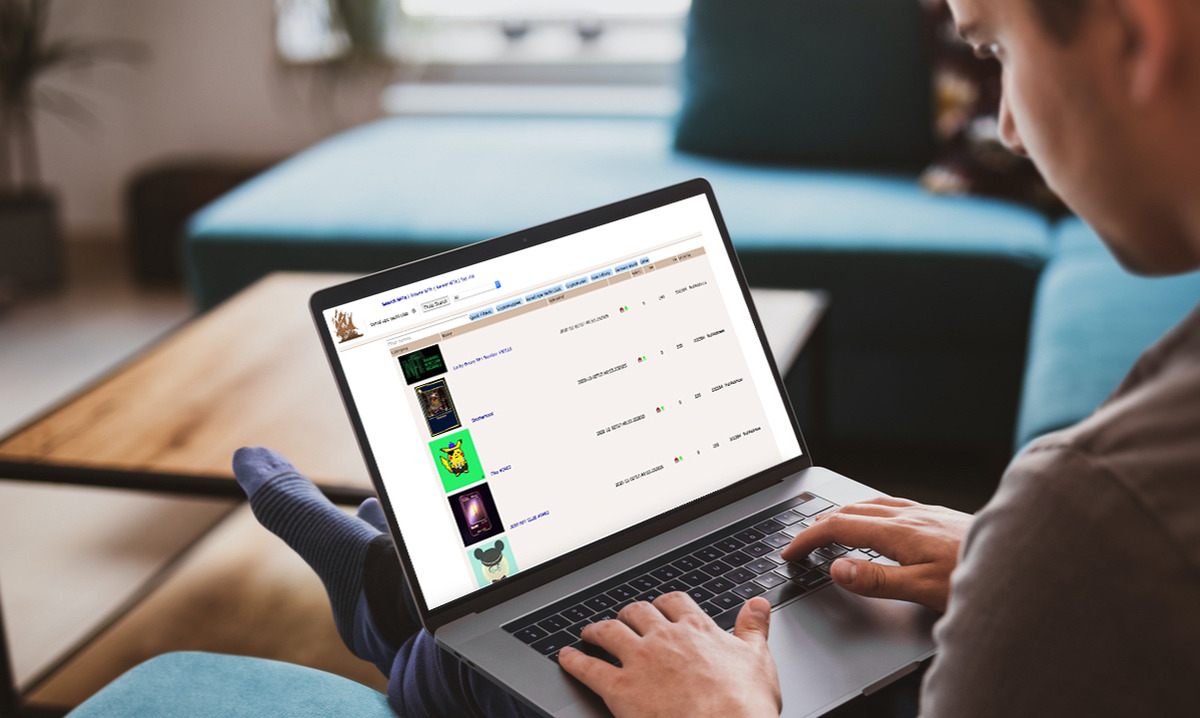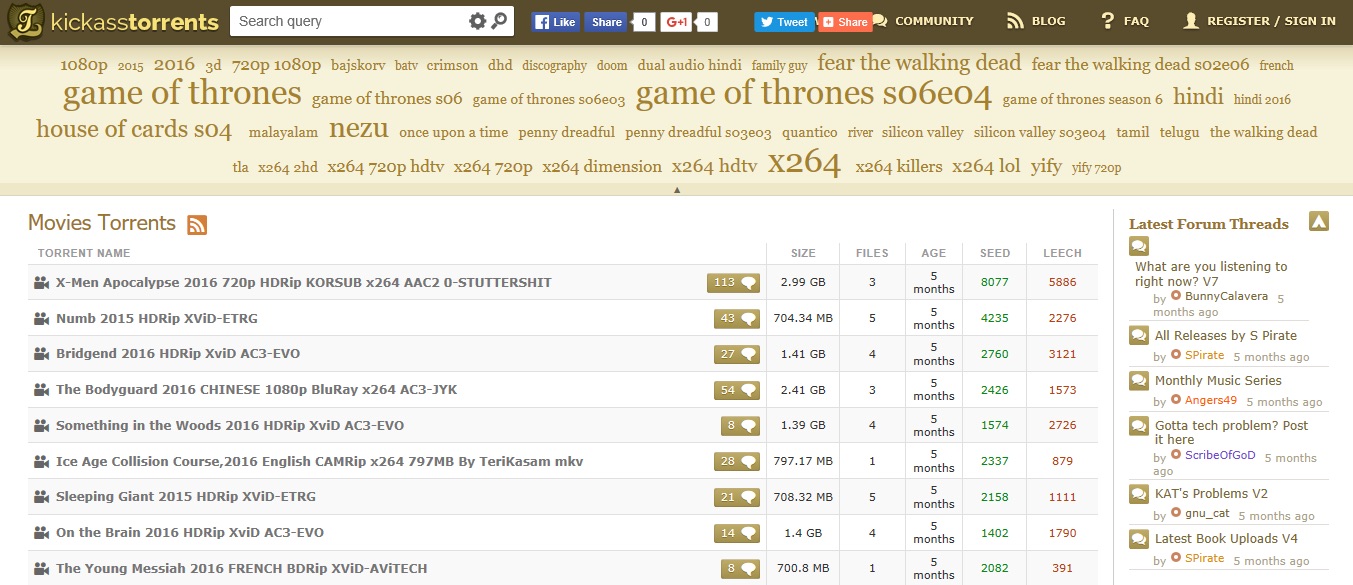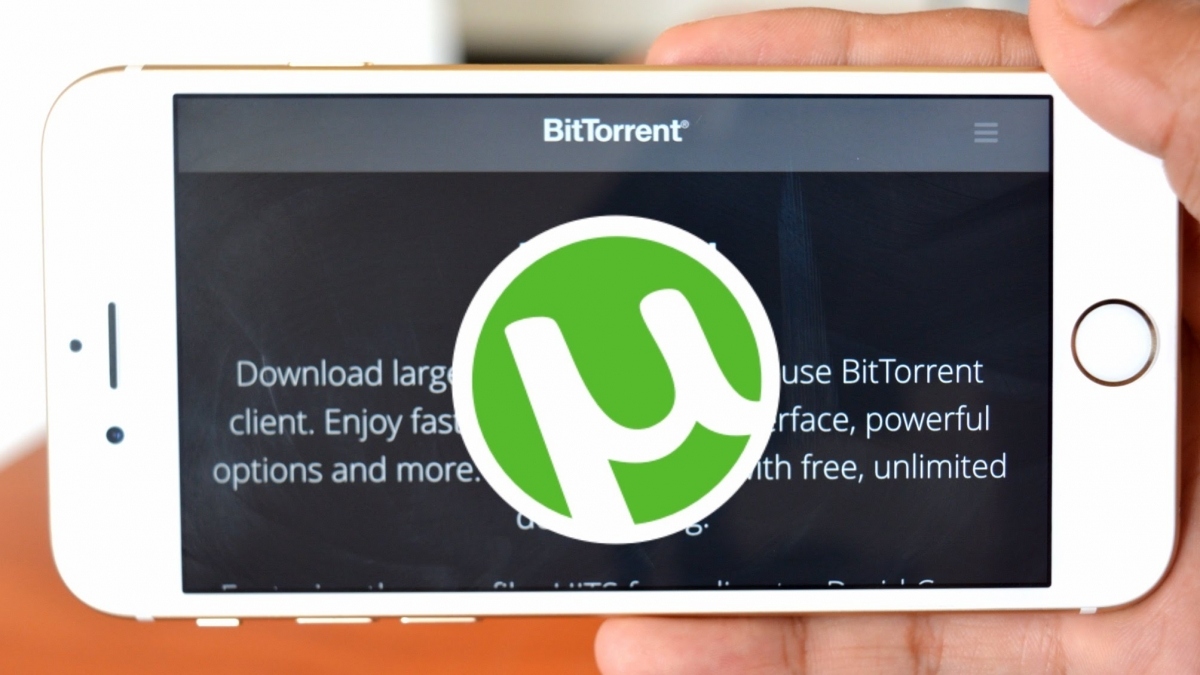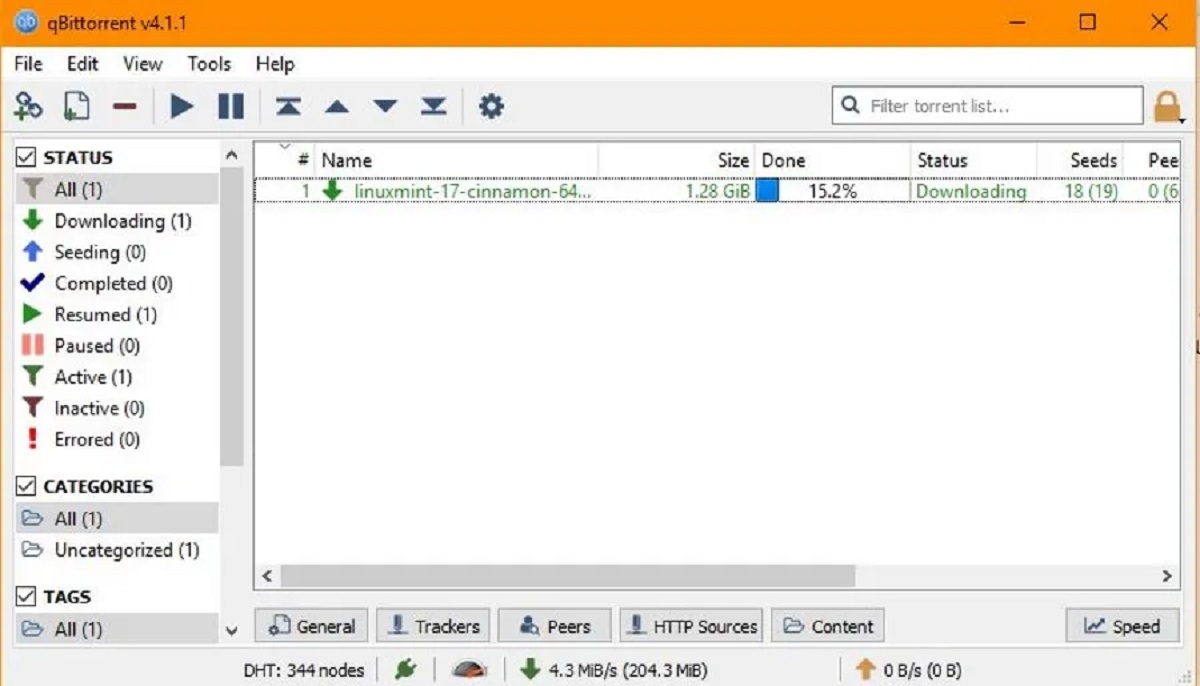Introduction
Welcome to the world of torrenting, where you can access a vast array of files, from movies and music to software and games. While torrents provide a convenient way to download large files, the process can sometimes be frustratingly slow. Have you ever wondered how to make your torrents download faster, maximizing your download speed and efficiency? Look no further – in this article, we will provide you with valuable tips on how to optimize your torrent downloads and enjoy a faster, smoother experience.
Torrenting is a popular method of file sharing that relies on a peer-to-peer network. Instead of downloading files from a central server, you connect to multiple users who are already sharing the file you want. This decentralized approach allows for faster downloads and easier distribution of large files.
However, several factors can affect the speed of your torrent downloads. Your internet connection, choice of torrent client, number of seeders, and even your own settings can all impact your download speed. By understanding and implementing some simple strategies, you can significantly improve your download speed and overall torrenting experience.
In this article, we will guide you through the steps to make your torrents download faster. Whether you are a seasoned torrent user or just getting started, these tips will help you optimize your download speed and get your files faster.
Keep in mind that these strategies are designed to help you maximize your download speed while staying within the limits of your internet service provider and respecting copyright laws. Always use torrents responsibly and ensure that you have the legal rights to download and share the files you are accessing.
Check Your Internet Connection
Before diving into torrent optimization techniques, it’s essential to ensure that your internet connection is stable and performing at its best. A slow or unreliable internet connection can severely impact your download speed and overall torrenting experience.
Start by checking your internet speed using an online speed test tool. This will give you an idea of your current download and upload speeds. Make sure that your actual speeds are close to the advertised speeds from your internet service provider (ISP).
If your internet speeds are significantly lower than expected, there are a few steps you can take to improve them. First, restart your modem and router to refresh the connection. Sometimes, a simple reset can resolve any temporary issues or conflicts.
Ensure that you are connected to your network via an Ethernet cable, if possible. Wired connections tend to be more stable and faster than Wi-Fi connections. If you are using Wi-Fi, make sure that you are close to your router and avoid any physical obstructions that may interfere with the signal.
If your internet speeds are consistently slow, consider upgrading your internet plan with your ISP. Higher-speed plans can provide faster download and upload speeds, giving you a better torrenting experience. Additionally, you may want to check if your ISP is throttling or limiting your torrent traffic. Some ISPs implement traffic management policies that can slow down torrent downloads. If this is the case, consider switching to a different ISP or using a virtual private network (VPN) to encrypt your torrent traffic.
It is worth mentioning that torrents rely on a good upload speed as well. When you download a torrent, you are also contributing to the distribution of the file by uploading (seeding) to other users. If your upload speed is significantly slower than your download speed, it may be necessary to adjust your torrent client’s settings to limit the upload speed, allowing more bandwidth for downloading.
Remember, a fast and stable internet connection is crucial for optimal torrenting performance. By ensuring that you have a reliable connection, you will be one step closer to maximizing your download speed and enjoying faster torrent downloads.
Choose the Right Torrent Client
The choice of torrent client plays a significant role in determining the speed and efficiency of your torrent downloads. A torrent client is a software program that allows you to connect to the peer-to-peer network and download or upload files using the BitTorrent protocol.
There are several torrent clients available, each with its own features and performance capabilities. When selecting a torrent client, consider the following factors:
- User Interface: Choose a client with a user-friendly and intuitive interface. This will make it easier for you to navigate and manage your torrent downloads. Look for a client that offers a clean and organized layout.
- Compatibility: Ensure that the client is compatible with your operating system. Most popular torrent clients are available for Windows, macOS, and Linux.
- Resource Usage: Consider the resource usage of the client. Some torrent clients consume a significant amount of system resources, which can slow down your overall computer performance. Look for a client that is lightweight and doesn’t hog your computer’s resources.
- Speed and Efficiency: Check user reviews and comparisons to gauge the speed and efficiency of different torrent clients. Look for clients that have a reputation for fast and reliable downloads.
- Advanced Features: If you are an experienced torrent user, you may value advanced features such as remote access, encryption, and torrent scheduling. Consider your specific needs and look for a client that offers the features you require.
Some popular torrent clients include uTorrent, qBittorrent, Vuze, Deluge, and Transmission. These clients have established reputations and offer a balance between user-friendliness and advanced features. It’s recommended to research and try different clients to find the one that best suits your needs and preferences.
After selecting a torrent client, ensure that you keep it updated with the latest version. Client updates often include bug fixes, performance improvements, and security patches. Keeping your client up-to-date will ensure that you have access to the latest features and enhancements.
Choosing the right torrent client is crucial for optimizing your download speed and managing your torrent downloads effectively. By considering the factors mentioned above, you can find a client that meets your requirements and provides a seamless and efficient torrenting experience.
Find a Torrent with a Large Number of Seeders
When it comes to maximizing your download speed, one of the most critical factors is the number of seeders available for the torrent you are downloading. Seeders are users who have already downloaded the entire file and are sharing it with others. The more seeders there are, the faster your download speed can be.
To find a torrent with a large number of seeders, follow these tips:
- Search on reputable torrent sites: Start your search on reputable torrent sites known for their extensive catalog and active user base. Websites like The Pirate Bay, 1337x, and RARBG are popular choices. These sites typically provide information about the number of seeders and leechers (users who are downloading the file) for each torrent.
- Sort by seeders: Most torrent sites allow you to sort search results by the number of seeders. Choose the option to sort the torrents by the highest number of seeders first. This will help you identify the most popular and well-seeded torrents.
- Read the comments: Before downloading a torrent, take some time to read the comments and feedback from other users. They can provide valuable information about the quality and reliability of the torrent, as well as the number of seeders available. If multiple users mention a low number of seeders or slow download speeds, it may be best to look for an alternative torrent.
- Consider verified torrents: Some torrent sites offer a “verified” or “trusted” label for torrents that have been checked for authenticity and quality. These torrents often have a higher number of seeders and are less likely to contain malware or fake files.
- Look for torrents with a good seeder-to-leecher ratio: A high seeder-to-leecher ratio indicates a healthier torrent ecosystem and a greater chance of faster download speeds. Choose torrents that have a significant number of seeders compared to leechers for a better downloading experience.
Finding a torrent with a large number of seeders is crucial for maximizing your download speed. Remember to prioritize torrents with high seed counts, read user feedback, and use trusted torrent sites to ensure a reliable and efficient downloading process.
Adjust the Bandwidth Settings
Adjusting the bandwidth settings in your torrent client can significantly improve your download speed and help you optimize your torrent downloads. By allocating the right amount of bandwidth to your downloads, you can ensure a smooth and efficient downloading process while still maintaining a stable internet connection for other activities.
Here are some ways to adjust your bandwidth settings:
- Set an appropriate download/upload speed ratio: Most torrent clients allow you to set the maximum download and upload speeds. It is recommended to allocate a higher portion of your available bandwidth to downloads (e.g., 80%) and a lower portion to uploads (e.g., 20%). This will prioritize the speed of your own downloads while still contributing to the torrent ecosystem.
- Limit the download speed: If you are experiencing slow download speeds, you can try limiting the maximum download speed in your torrent client. This can help prevent your internet connection from being overloaded and ensure that you have enough bandwidth for other online activities.
- Adjust the number of simultaneous downloads: Torrent clients often allow you to control the maximum number of torrents you can download simultaneously. If you have a slow internet connection or limited bandwidth, reducing the number of simultaneous downloads can improve the speed of each individual download.
- Use scheduling: Some torrent clients offer scheduling options, allowing you to set specific times for downloading torrents. If you know that your internet connection is faster during certain hours (e.g., late at night), you can schedule your downloads to occur during those times for optimal speed.
- Utilize the “smart” or “optimized” settings: Many modern torrent clients come with “smart” or “optimized” settings that automatically adjust the bandwidth allocation based on your internet connection speed and the status of your torrents. Enabling these settings can simplify the process of bandwidth management and ensure that your downloads run smoothly.
It’s important to keep in mind that adjusting your bandwidth settings should be done carefully and in moderation. Allocating too much bandwidth to your downloads may impact the performance of other online activities, such as browsing or streaming. Strike a balance that allows for efficient torrent downloads while still ensuring a stable internet connection for other tasks.
By fine-tuning your bandwidth settings in your torrent client, you can optimize your download speed and enhance your overall torrenting experience.
Prioritize the Files You Want to Download
When downloading a torrent that contains multiple files, you might not necessarily need or want to download everything. Prioritizing the specific files you want can help save time, storage space, and bandwidth. By selecting only the essential files, you can focus on downloading what you need faster and more efficiently.
Here are some strategies for prioritizing the files you want to download within a torrent:
- Review the file list: Before starting the download, take a closer look at the files included in the torrent. Determine which files are essential to you and which ones you can do without. This step will help you prioritize your downloads and avoid wasting resources on unnecessary files.
- Select files to download: Most torrent clients allow you to choose specific files to download within a torrent. By default, all files may be selected, so make sure to deselect the files you don’t want. This way, you can focus solely on the files that interest you, saving time and bandwidth.
- Set download priority: Some torrent clients offer the option to set download priorities for different files within a torrent. You can set the priority to high for the files you want to download first and to low or skip for the files you want to download last or not at all. This allows you to control the order in which the files are downloaded and maximizes your efficiency.
- Use file filters: Certain torrent clients provide the feature to filter files based on specific criteria. You can filter files by file type, size, or name to quickly identify the files you want to download. This feature is particularly useful for torrents that contain a large number of files.
Prioritizing the files you want to download within a torrent can expedite the downloading process and make it more convenient. By selecting only the essential files, you are not only saving time but also conserving storage space and reducing the strain on your internet connection.
Keep in mind that once you have downloaded the specific files you desired, you should leave the torrent running and continue seeding as a way to contribute to the torrenting community and maintain a positive sharing ratio.
Connect to a Fast and Reliable VPN Server
Using a virtual private network (VPN) while torrenting can enhance your privacy and security, but it can also affect your download speed. When choosing a VPN server, it is crucial to connect to a fast and reliable server to minimize any potential slowdowns and maintain optimal download speeds.
Here are some tips for selecting a fast and reliable VPN server for your torrenting activities:
- Choose a VPN provider with a vast server network: Opt for a VPN service that offers a wide range of server locations across different countries. This provides you with more options to find servers that are geographically closer to your physical location, resulting in faster connection speeds.
- Select a server with low user load: High server loads can lead to slower speeds, so choose a VPN server with a lower user load. VPN providers often provide server load information, such as the number of users connected to each server. Choose a server with lower user load to enjoy faster and more reliable speeds.
- Check the proximity of the server: Connecting to a server that is physically closer to your location can reduce latency and improve download speeds. Find a VPN server that is geographically close to you for optimal performance.
- Consider VPN protocols: Different VPN protocols offer varying levels of speed and security. OpenVPN is generally considered a reliable and efficient protocol. However, if you experience slower speeds, you may try switching to other protocols like WireGuard or IKEv2, as they can offer faster connections.
- Test and experiment with different servers: Not all VPN servers perform the same, so it’s a good practice to test and experiment with different server locations. One server might work better for torrenting than others. Try connecting to different VPN servers and evaluate the speeds and overall performance to find the optimal server for your torrenting needs.
Remember to regularly update your VPN client and select servers that support P2P traffic. Additionally, it’s important to note that while using a VPN can offer enhanced privacy and security, it doesn’t guarantee complete anonymity. Always adhere to the legal requirements regarding torrenting and respect copyright laws.
Connecting to a fast and reliable VPN server ensures a private and secure torrenting experience while maintaining high download speeds. Take the time to choose the right VPN server, and you’ll be able to enjoy faster and more efficient torrent downloads.
Avoid Peak Hours
Torrenting during peak hours can significantly impact your download speed due to increased network congestion. To maximize your download speed, it is advisable to avoid torrenting during these peak hours when internet traffic is at its highest. By choosing the right time to torrent, you can take advantage of less crowded networks and experience faster download speeds.
Here are some tips for avoiding peak hours and optimizing your torrent downloads:
- Identify peak hours: Monitor your internet speed and connection performance at different times of the day to determine when network congestion is most prevalent. Typically, peak hours occur during evenings and weekends when more people are using the internet.
- Torrent during off-peak times: Schedule your torrent downloads during off-peak hours when internet traffic is lower. Early morning or late at night is often a good time to torrent as fewer users are online, resulting in less network congestion and faster download speeds.
- Consider time zones: If you are downloading torrents that are popular in a specific region, take into account the time zone differences. Torrenting during off-peak hours in the region where the content is popular can help you avoid congestion and optimize your download speed.
- Use scheduling features: Some torrent clients offer scheduling features that allow you to set specific times for downloading torrents. Take advantage of these features to schedule your downloads during off-peak hours automatically.
- Maintain a seeding schedule: If you are actively involved in torrenting communities and practice seeding, try to schedule your seeding activities during off-peak hours. This allows you to contribute to the community while minimizing the impact on your download speeds.
By avoiding peak hours and torrenting during off-peak times, you can significantly improve your download speeds and enjoy a smoother torrenting experience. Not only will you experience faster downloads, but you may also notice overall better performance in other online activities due to reduced network congestion.
Keep in mind that internet traffic fluctuates, and peak hours may vary depending on your location and internet service provider (ISP). Observation and experimentation will help you find the best times to torrent in your specific situation. As always, it’s essential to comply with legal requirements and respect copyright laws while torrenting.
Limit the Number of Simultaneous Torrent Downloads
When downloading multiple torrents simultaneously, your overall download speed can be impacted due to limited bandwidth and network congestion. By limiting the number of simultaneous torrent downloads, you can optimize your download speed and ensure a smoother torrenting experience.
Here are some tips for effectively managing your simultaneous torrent downloads:
- Evaluate your internet connection: Take into consideration the speed and capacity of your internet connection. If you have a slower connection or limited bandwidth, it is advisable to download fewer torrents simultaneously to avoid overloading your network.
- Adjust your torrent client settings: Most torrent clients allow you to set the maximum number of active downloads. Reduce this number to a manageable level based on your internet connection’s capabilities. Experiment with different settings to find the optimal balance between speed and the number of downloads.
- Focus on high-priority downloads: Prioritize the torrents that are most important to you and limit the number of concurrent downloads to those high-priority files. This way, you can allocate more bandwidth and resources to the downloads that matter the most to you.
- Monitor your download speeds: Keep an eye on your download speeds while downloading multiple torrents simultaneously. If you notice a significant slowdown, consider reducing the number of active downloads to improve the speeds of the remaining files.
- Utilize queueing: Some torrent clients offer queueing options, allowing you to select which torrents should start downloading first and which should wait in the queue. This feature can be helpful in managing your downloads effectively and ensuring a smoother downloading process.
By limiting the number of simultaneous torrent downloads, you can prioritize and allocate your bandwidth more efficiently, resulting in faster download speeds and a better overall torrenting experience. Remember that seeding is crucial to maintain a healthy torrent ecosystem, so ensure that you continue seeding even while limiting your active downloads.
Experiment with different settings and observe the impact on your download speeds to fine-tune the number of simultaneous torrent downloads that works best for your internet connection and preferences.
Use Port Forwarding
Port forwarding is a technique that allows incoming connections to bypass your router’s firewall and reach a specific device or computer on your network. It can help optimize your torrenting experience by improving the speed and connectivity of your torrents.
Here’s how you can use port forwarding for torrenting:
- Understand your router: Familiarize yourself with your router’s settings and interface. You will need to access your router’s configuration page to enable port forwarding.
- Choose a port: Select a specific port or range of ports for your torrent client to use. It is recommended to use a port number above 10000 to avoid conflicts with commonly used ports.
- Access your router settings: Open a web browser and enter your router’s IP address into the address bar. This address can usually be found in the router’s documentation or by searching online for the make and model of your router along with the term “IP address.”
- Login to your router: Enter the router’s username and password to access the settings page. If you haven’t changed the default login credentials, check the manufacturer’s website or the router’s manual for the default login information.
- Find the port forwarding settings: Locate the port forwarding or virtual server settings in your router’s interface. The location and labeling of this setting can vary depending on the router model.
- Set up port forwarding: In the port forwarding settings, enter the port number you have chosen for your torrent client. Specify the IP address of the device running your torrent client, ensuring that the port is forwarded to that specific device.
- Save the changes: Once you have entered the necessary information, save the changes in your router’s settings. The router will apply the changes and start forwarding incoming connections on the specified port to your torrent client.
Enabling port forwarding allows your torrent client to establish direct connections with other peers, potentially improving download speeds and connectivity. However, keep in mind that port forwarding may pose some security risks, as it exposes your device to incoming connections from the internet. Stay informed about potential security concerns and take the necessary precautions to protect your network and devices.
It’s also worth noting that some ISPs (Internet Service Providers) impose restrictions or block certain ports, making port forwarding less effective. If you encounter difficulties with port forwarding, you may want to consider using alternative methods like UPnP (Universal Plug and Play) or NAT-PMP (Network Address Translation Port Mapping Protocol) if supported by your router and torrent client.
By using port forwarding effectively, you can potentially enhance your torrenting experience by establishing direct connections with peers and maximizing your download speeds.
Seed Your Torrents
Seeding is a crucial aspect of torrenting that involves uploading and sharing the files you have downloaded. Seeders are users who have completed downloading a torrent and continue to upload it to other users in the network. By actively seeding your torrents, you contribute to the torrenting community and help maintain healthy download speeds for everyone involved.
Here are some important points to consider about seeding your torrents:
- Seed for as long as possible: It’s highly encouraged to keep your torrent client running and continue seeding even after completing your download. By doing so, you are providing other peers with the opportunity to download the files, maintain a healthy torrent ecosystem, and support the overall availability of the content.
- Maintain a positive seeding ratio: Seed as much as you can and aim for a positive seeding ratio. The seeding ratio represents the amount of data you have uploaded compared to what you have downloaded. A positive seeding ratio, such as 1.0 or higher, indicates that you have uploaded at least the same amount of data you have downloaded. This helps to ensure a fair and balanced torrenting community.
- Consider the health of the torrent: Some torrents rely heavily on seeders to maintain their availability. If you notice a torrent with very few seeders or a low availability of the file, consider continuing to seed for a longer duration to assist in the distribution and accessibility of the content.
- Seed selectively if necessary: If you have limited bandwidth or storage space, you can prioritize which torrents to seed. Focus on seeding the torrents that are more significant or have a higher demand within the community. By selectively seeding, you can still contribute while managing your resources efficiently.
- Use a seedbox or dedicated seeding device: If you have the means, consider using a seedbox or a dedicated device for seeding. A seedbox is a remote server specifically designed for torrenting, offering fast download and upload speeds. It allows you to continue seeding without impacting your home network’s bandwidth or performance.
- Participate in private torrent communities: Private torrent communities typically have strict seeding requirements and ratios. Engage in these communities to ensure you are actively seeding and maintaining a positive standing. This helps foster a strong and robust network of torrents.
By seeding your torrents, you play an integral role in the torrenting ecosystem, supporting the availability and distribution of files within the community. Remember that the longevity and success of torrenting rely on the collective effort of seeders and the willingness to share resources with others.
Be a responsible torrent user and contribute by seeding your torrents for as long as possible, helping to create a sustainable and efficient torrenting environment.
Conclusion
Torrenting is a popular and efficient method of downloading large files, but slow download speeds can be frustrating. However, with the right strategies and optimization techniques, you can significantly improve your torrenting experience and enjoy faster download speeds.
In this article, we have explored various ways to enhance your torrent downloads. Checking your internet connection, choosing the right torrent client, and finding torrents with a large number of seeders are essential steps to optimizing your download speed. Adjusting the bandwidth settings, prioritizing the files you want to download, and connecting to a fast and reliable VPN server can further boost your torrenting experience.
Additionally, avoiding peak hours, limiting the number of simultaneous downloads, using port forwarding effectively, and actively seeding your torrents contribute to a smoother and faster torrenting process.
Remember to always torrent responsibly, respect copyright laws, and adhere to legal requirements. Prioritize your privacy and security by using a VPN and staying informed about potential risks associated with torrenting.
By implementing these strategies and utilizing the right tools, you can maximize your download speeds, minimize network congestion, and enjoy a seamless torrenting experience. Experiment with different techniques to find what works best for your internet connection, torrent client, and personal preferences.
Happy and speedy torrenting!











